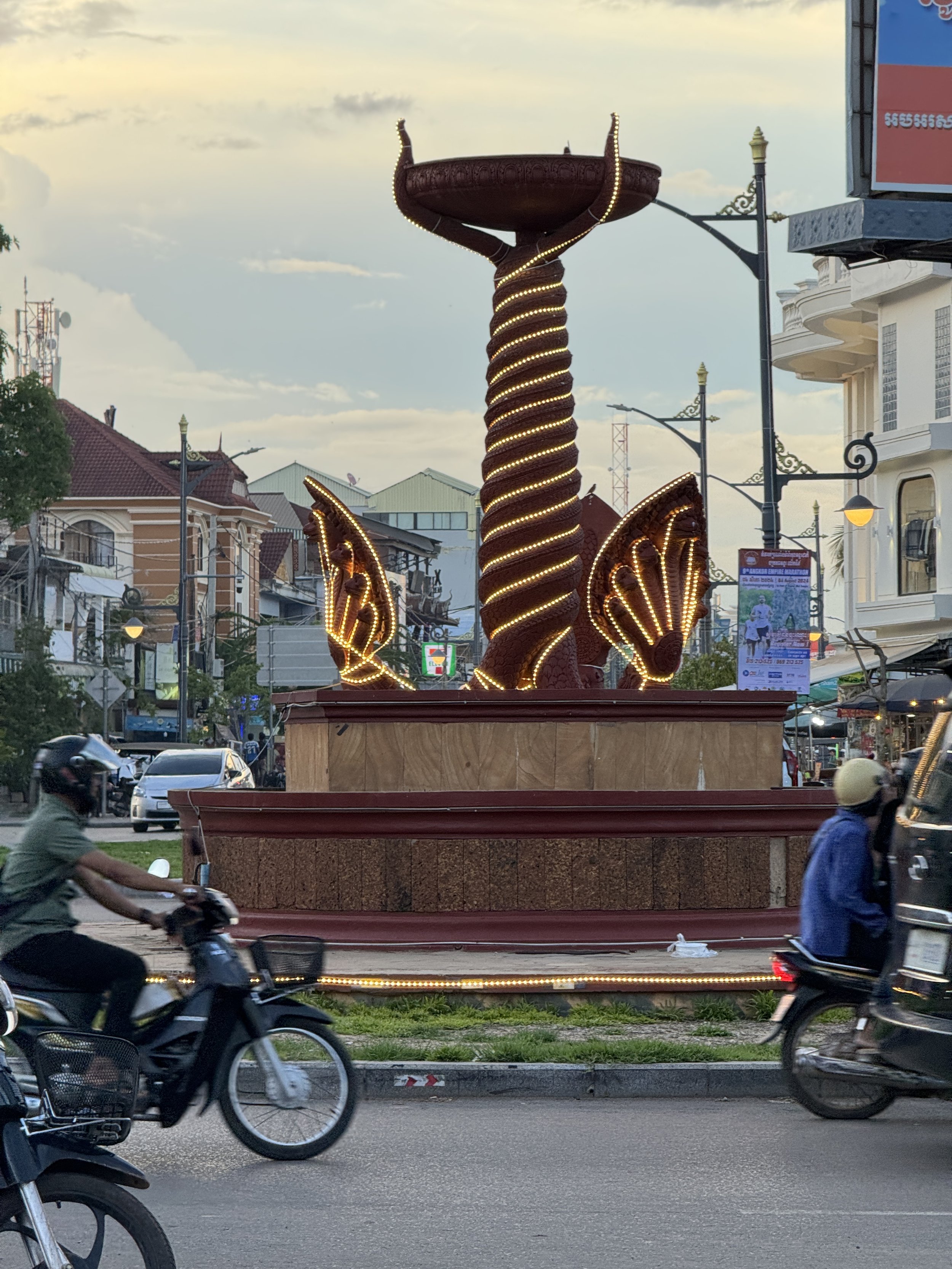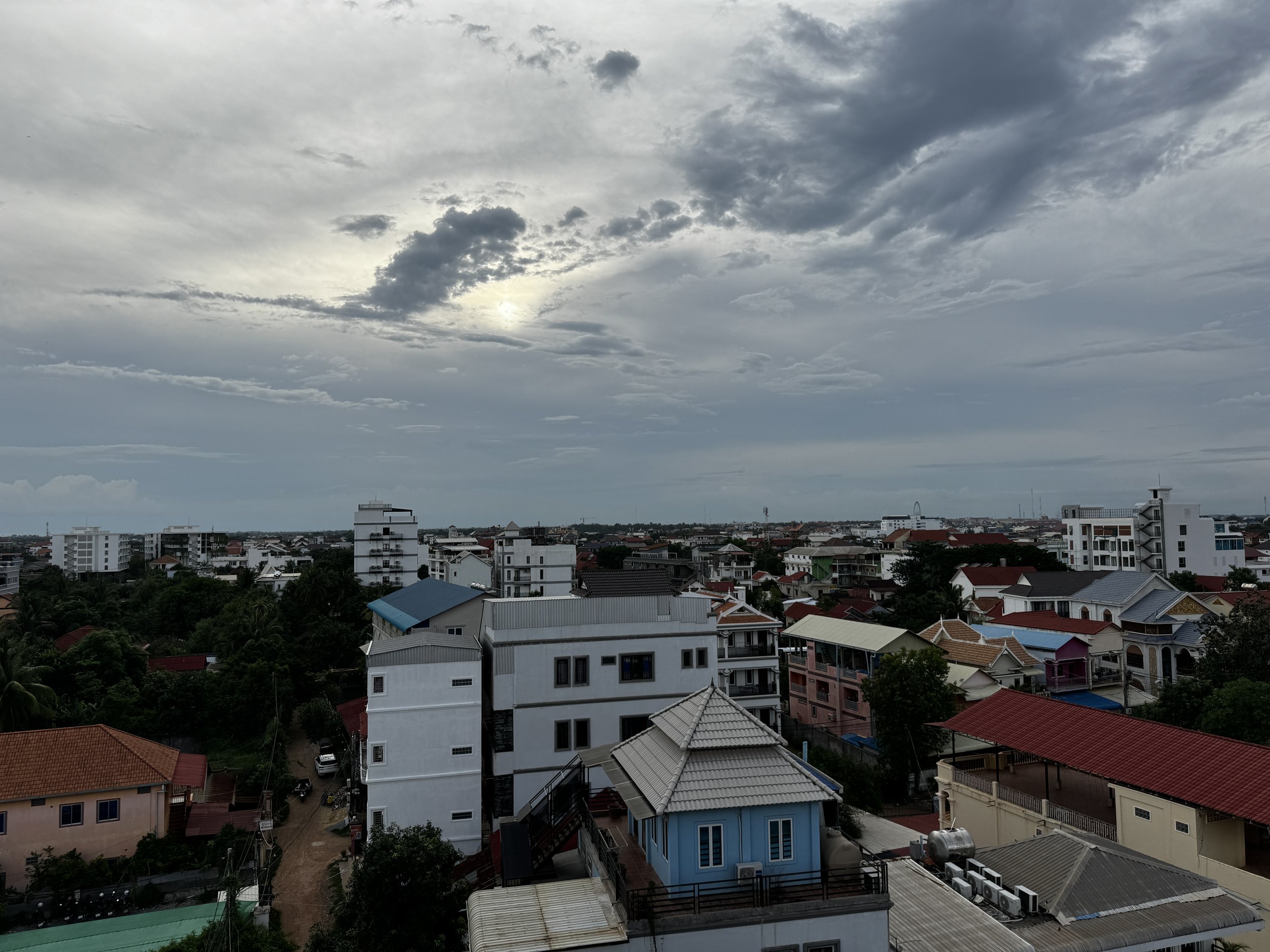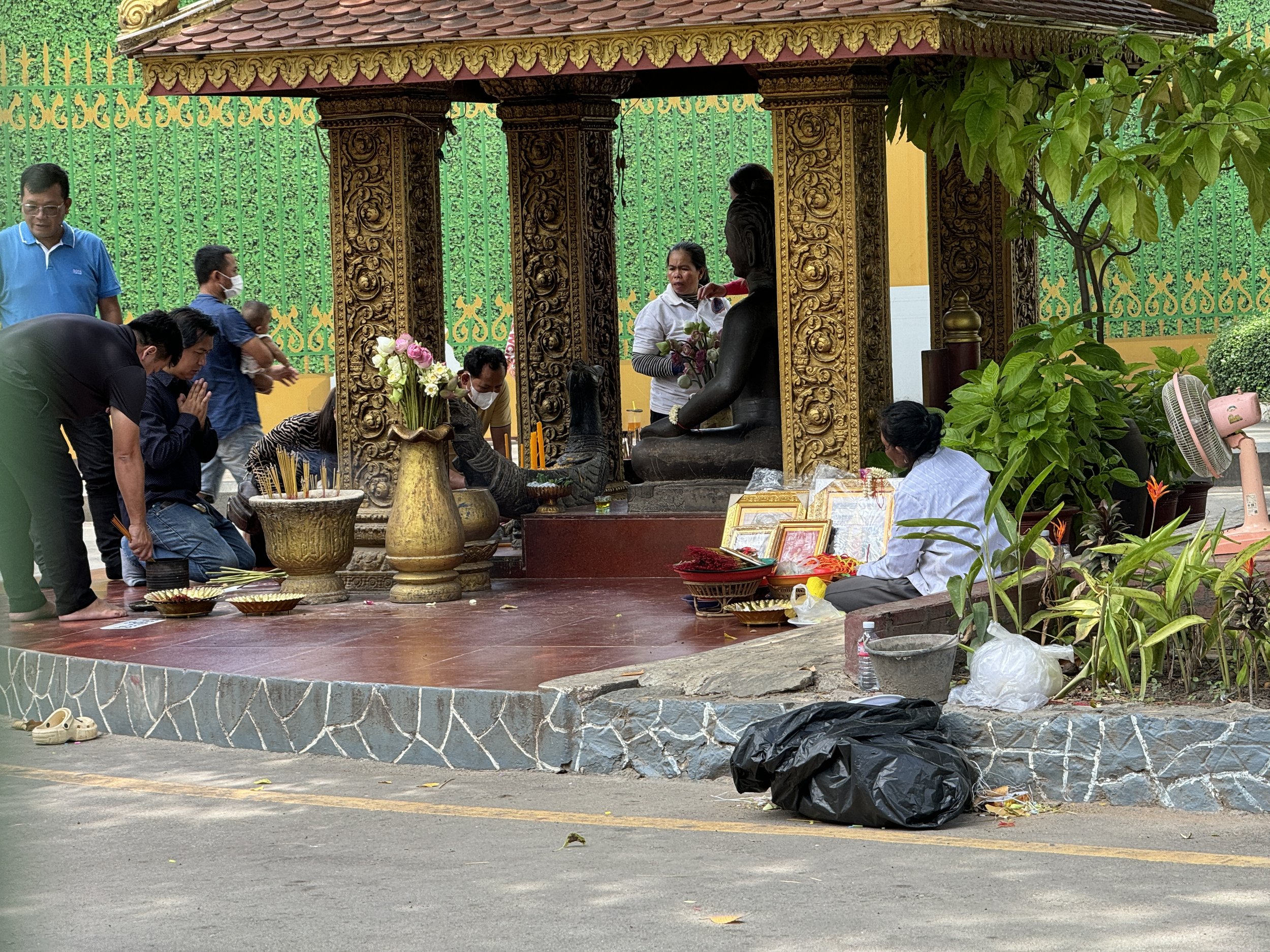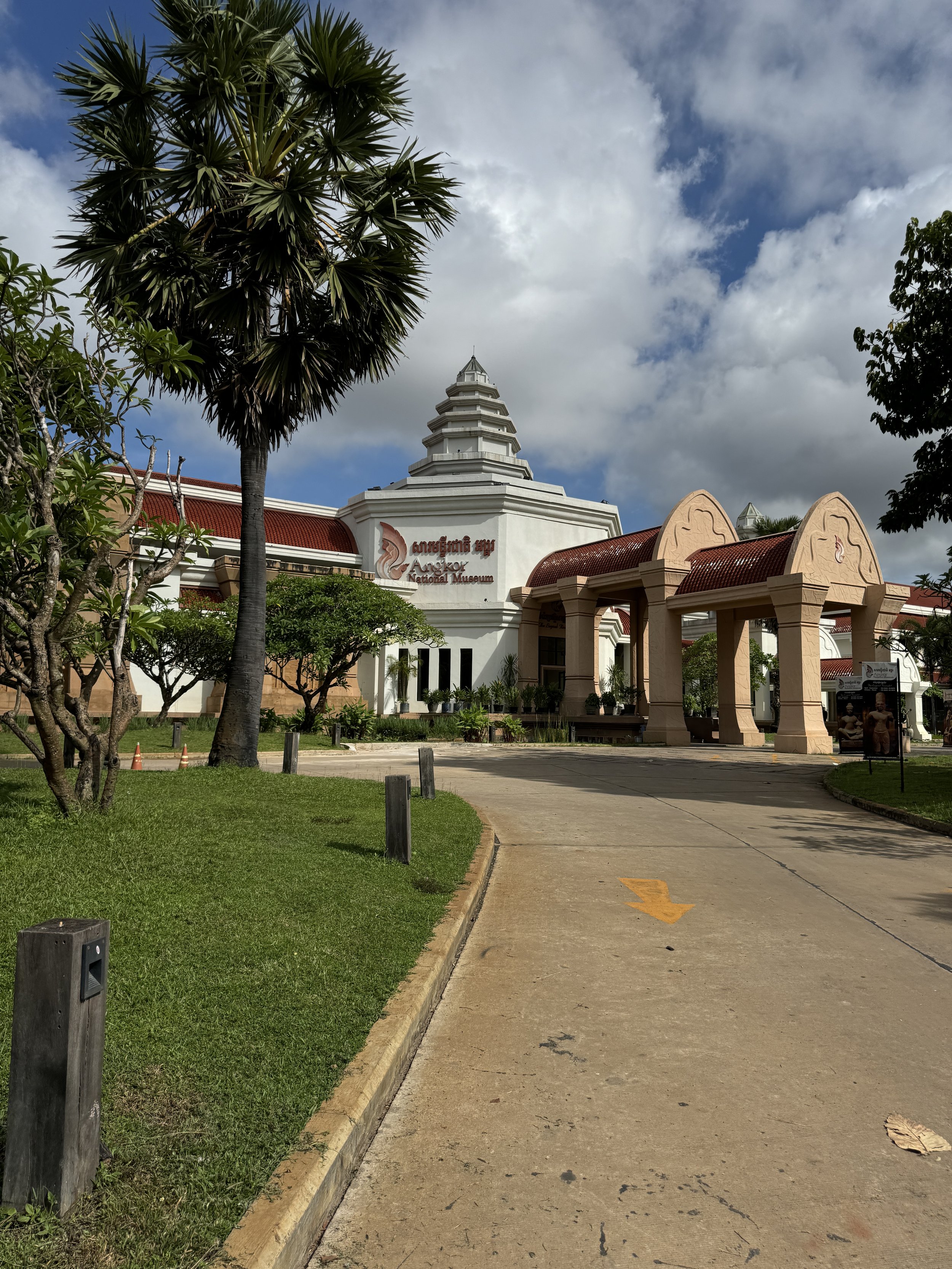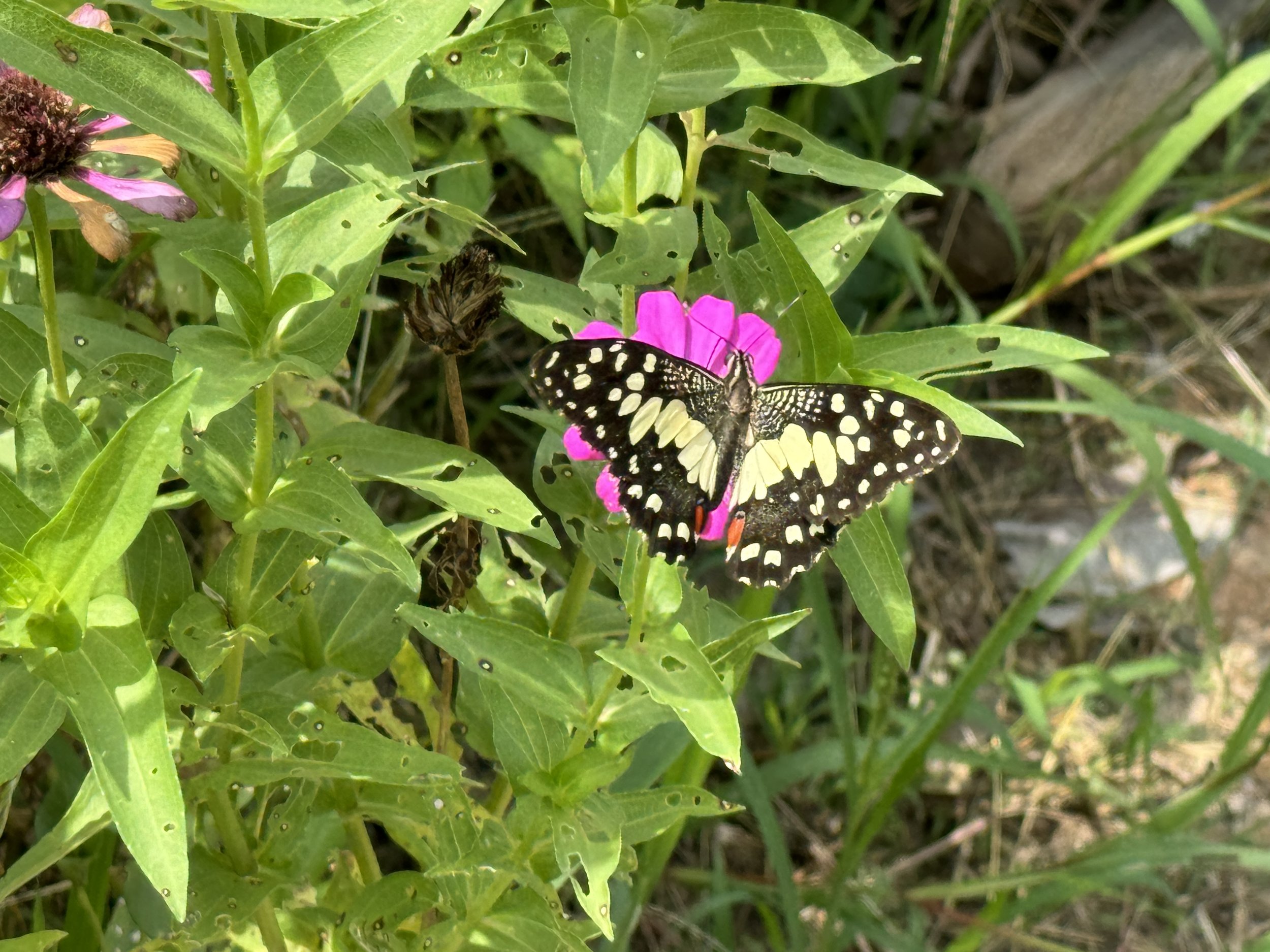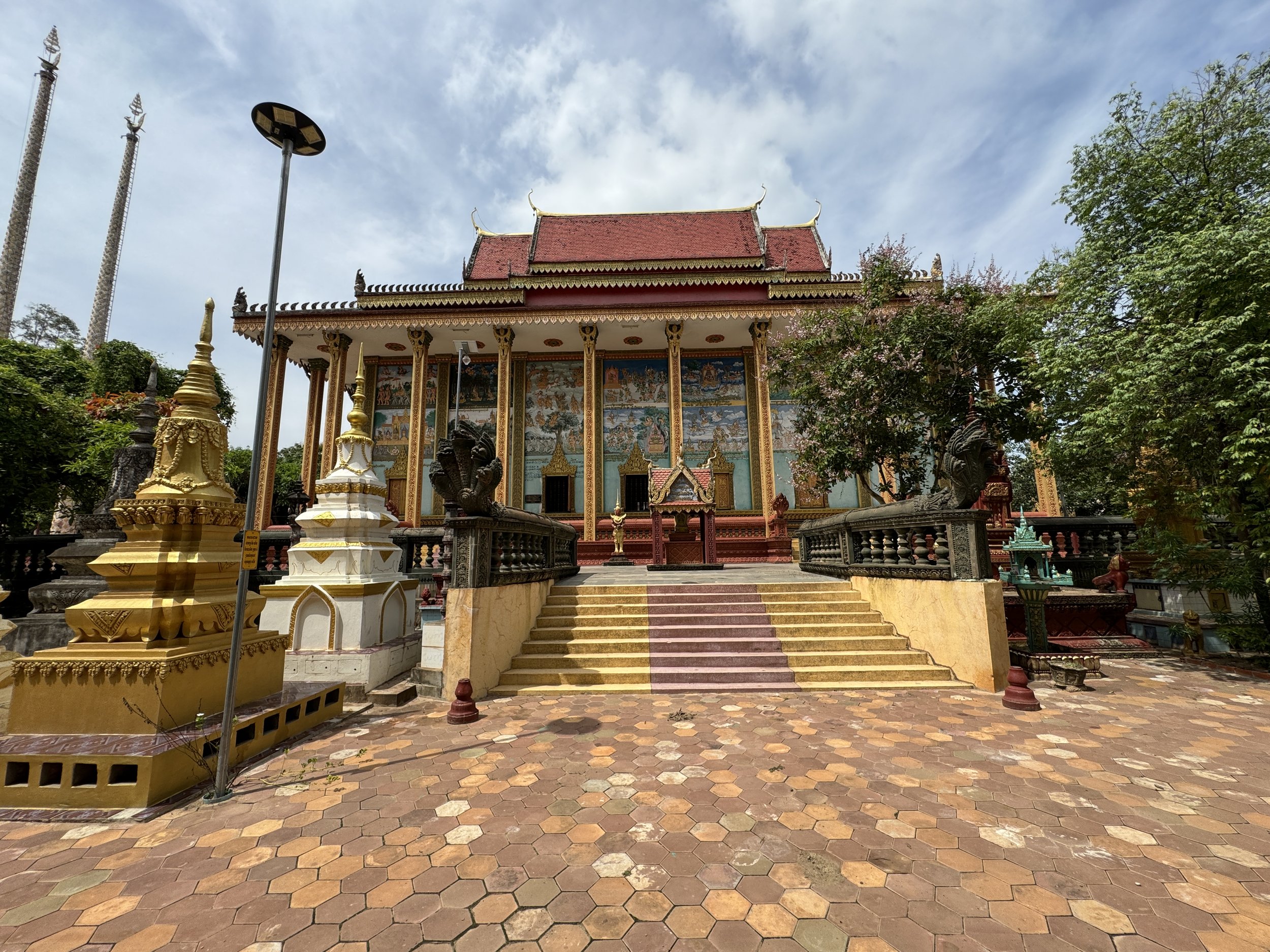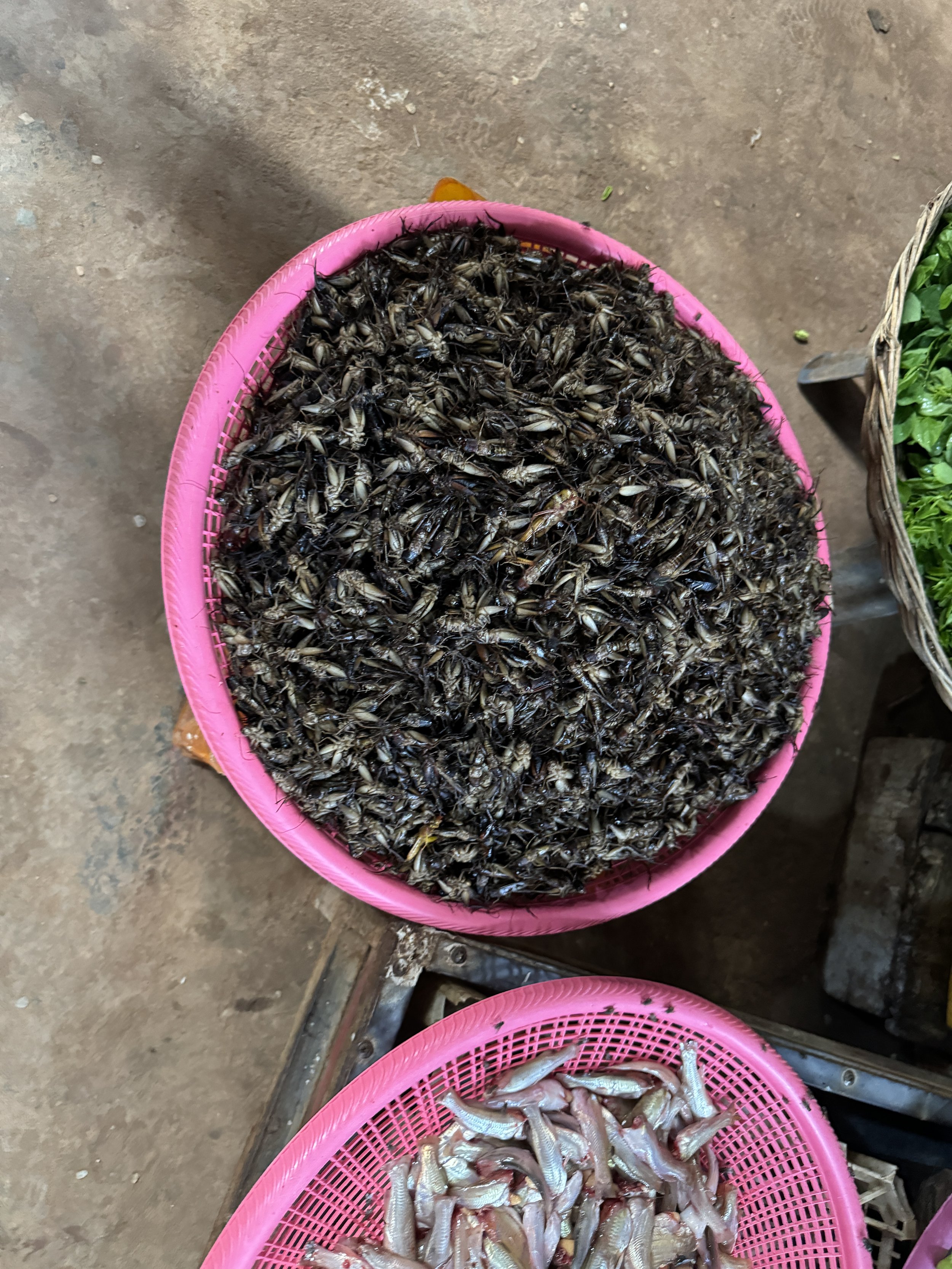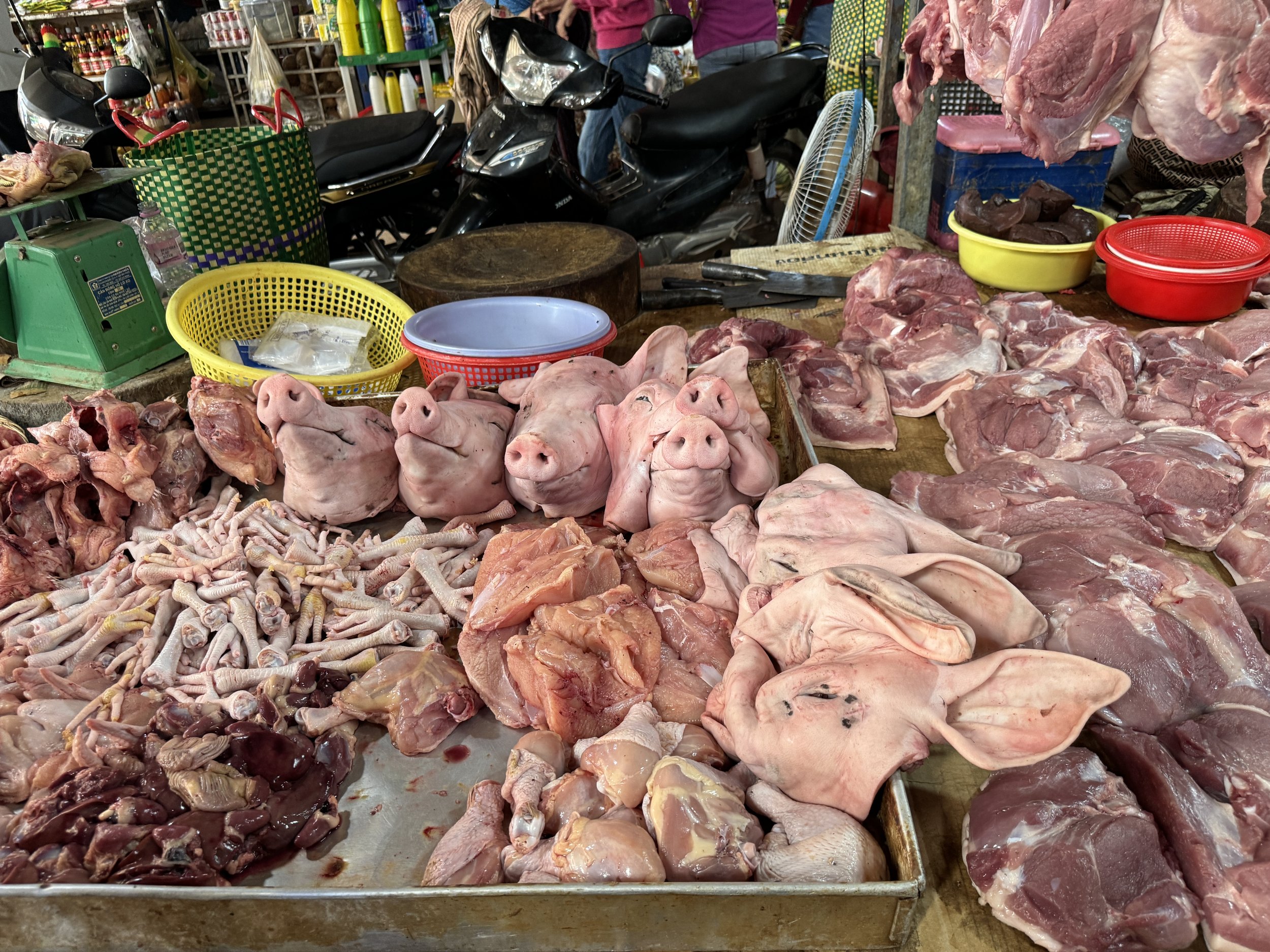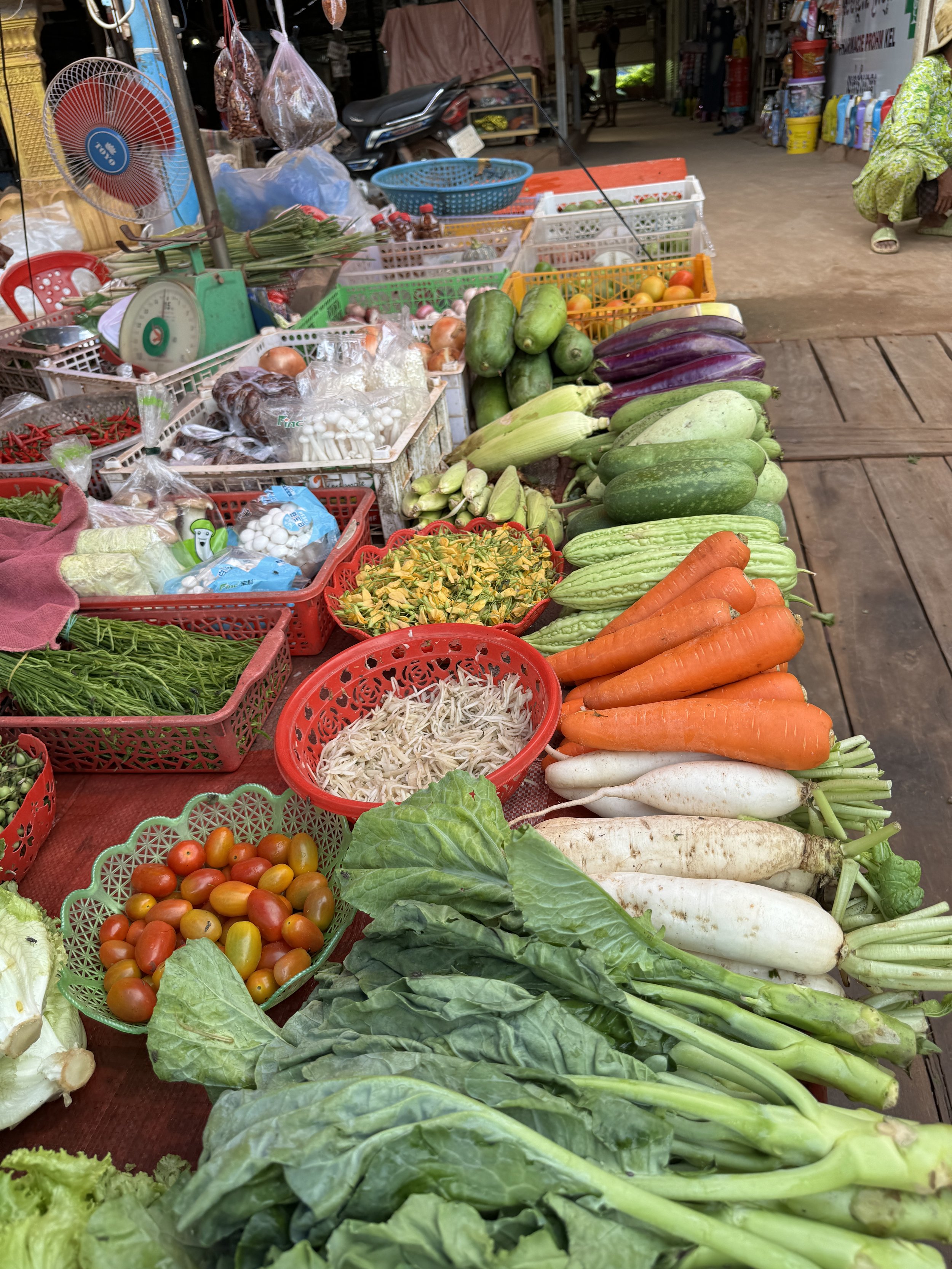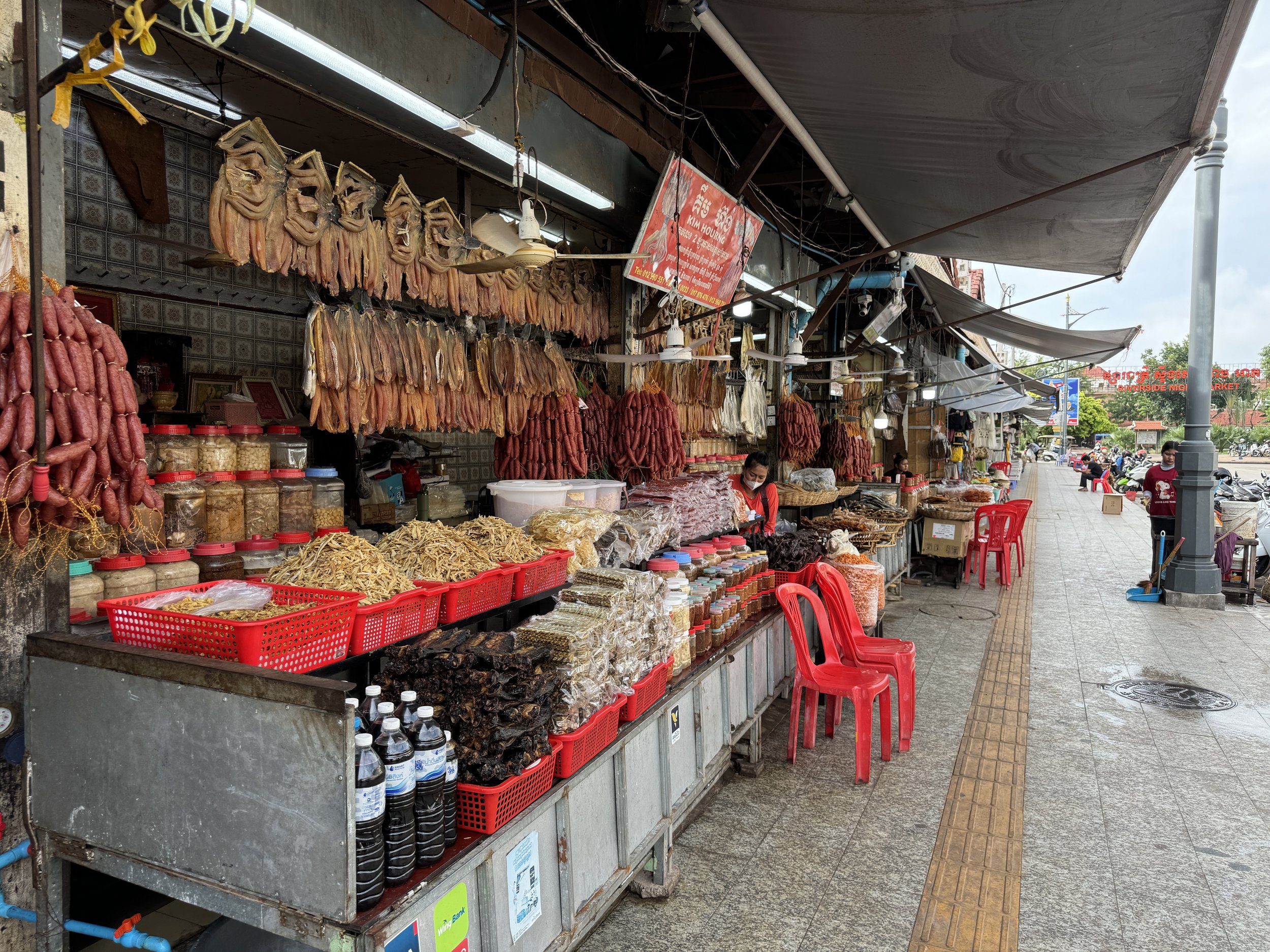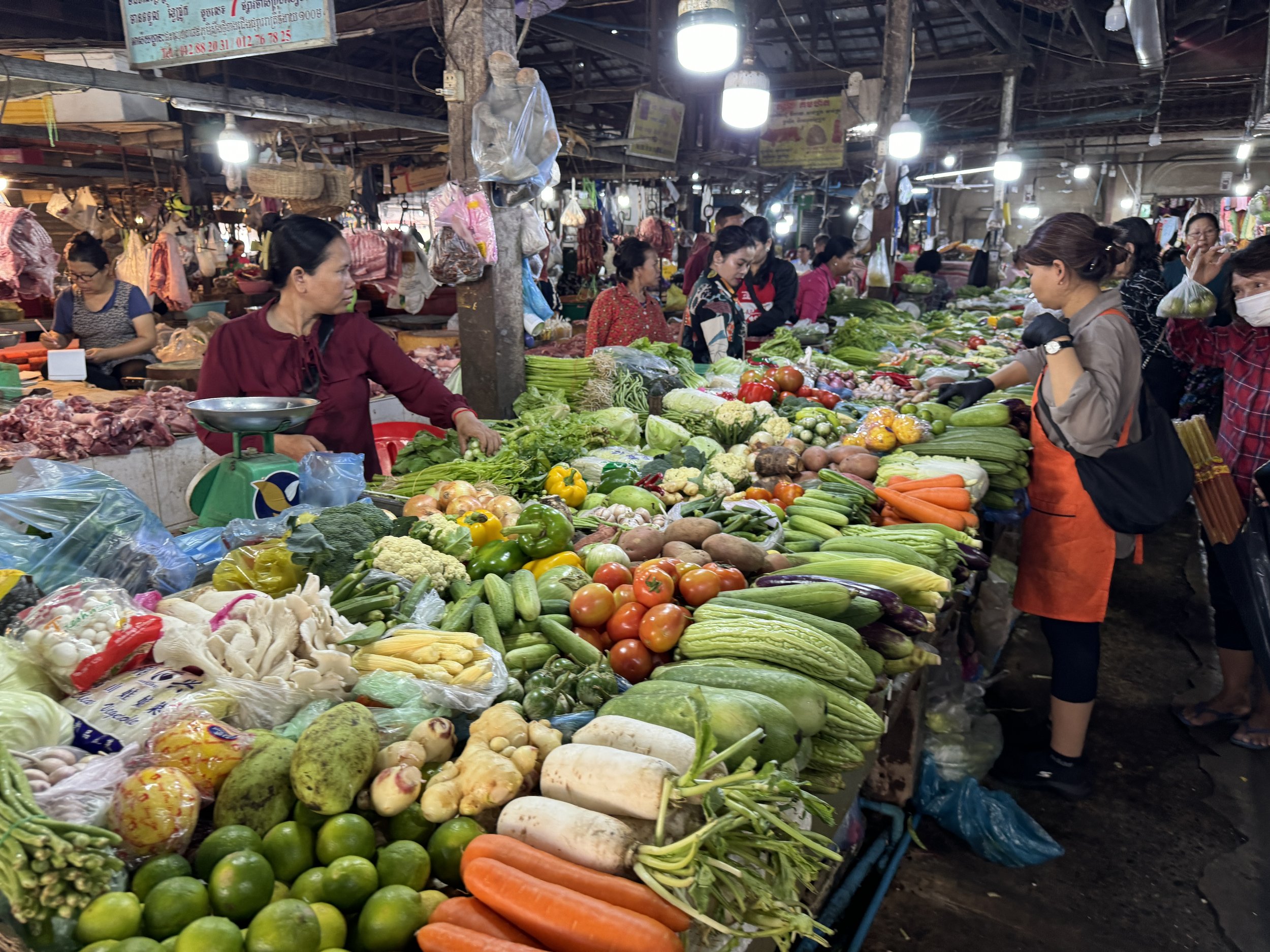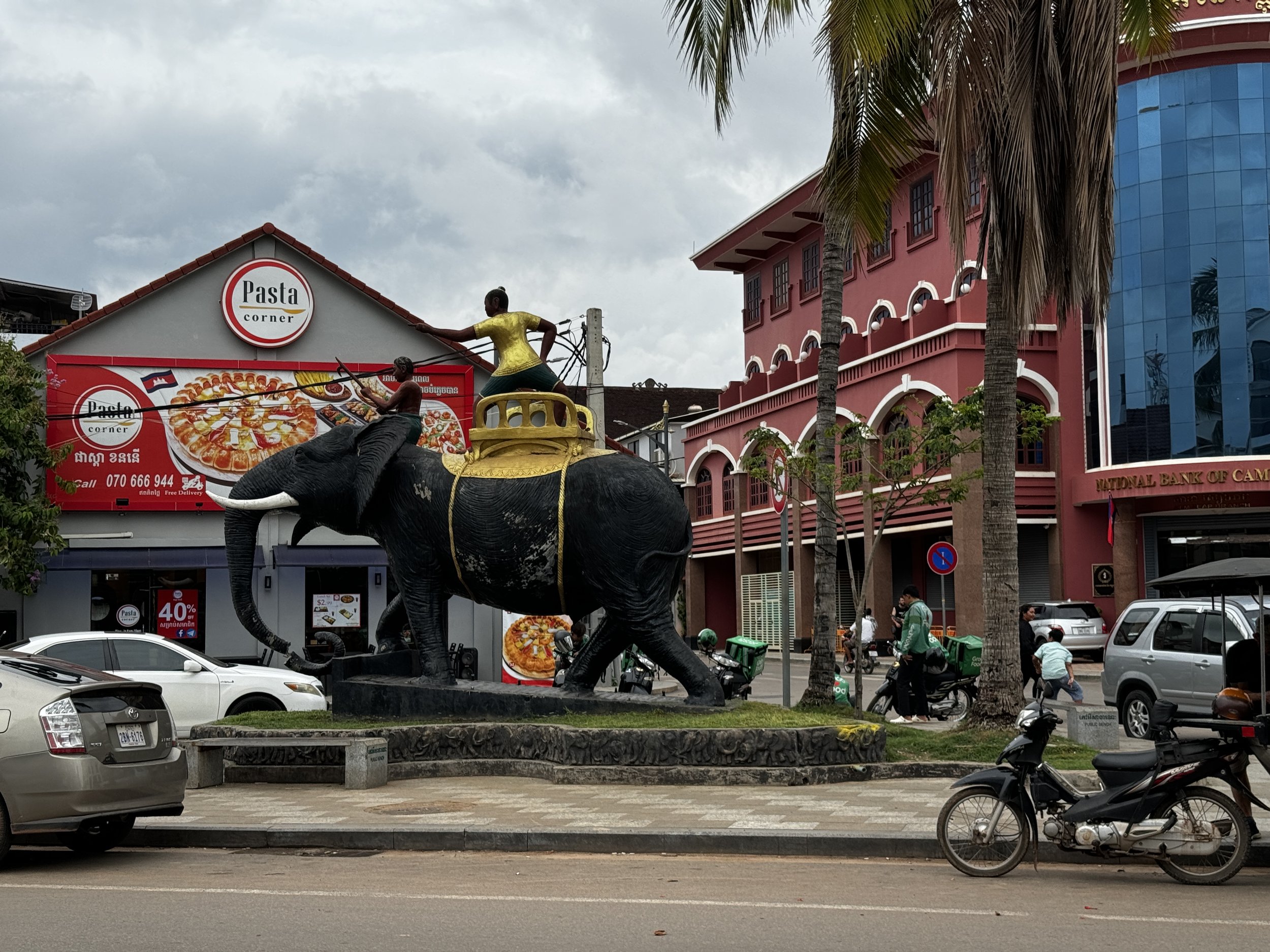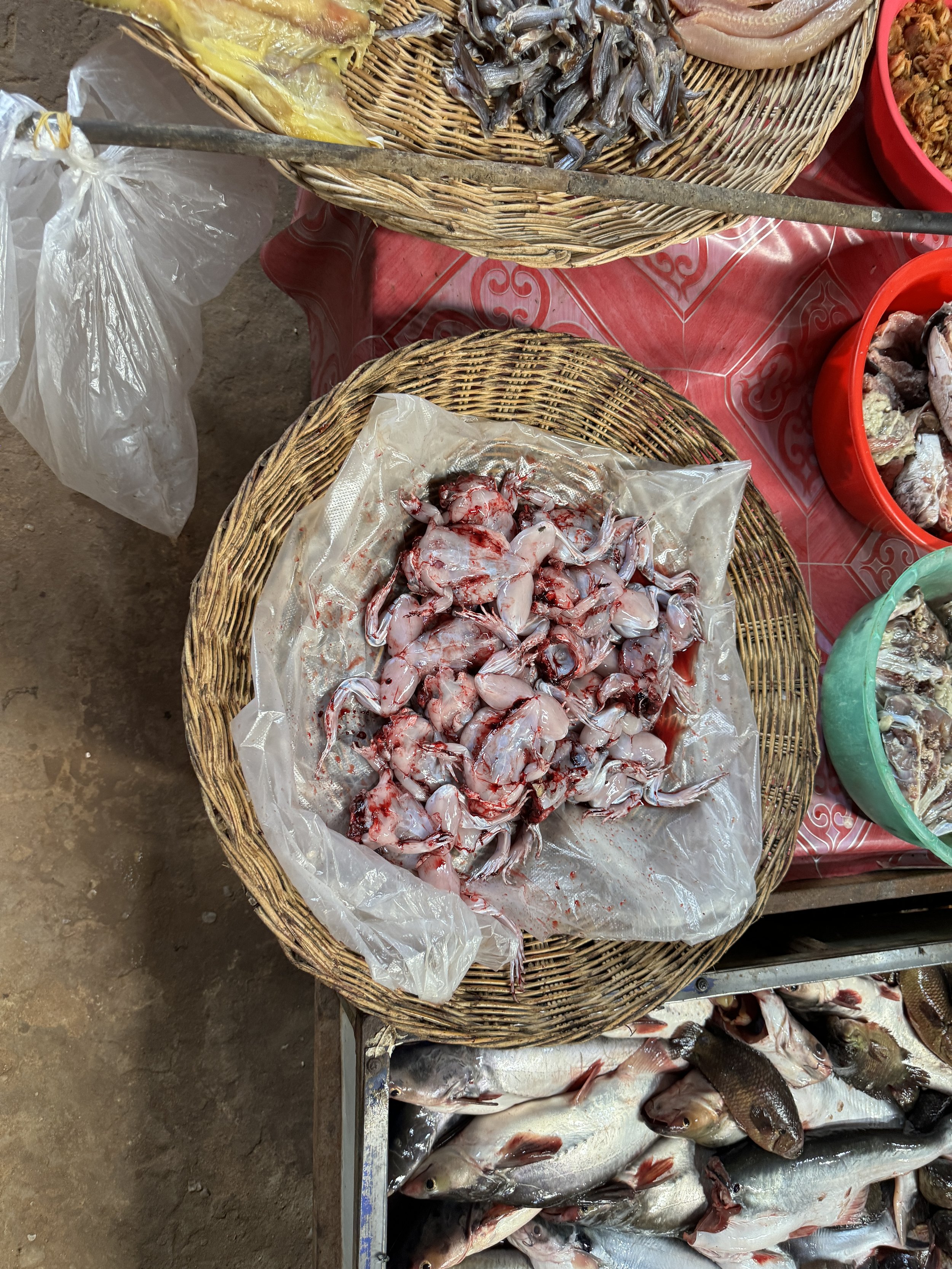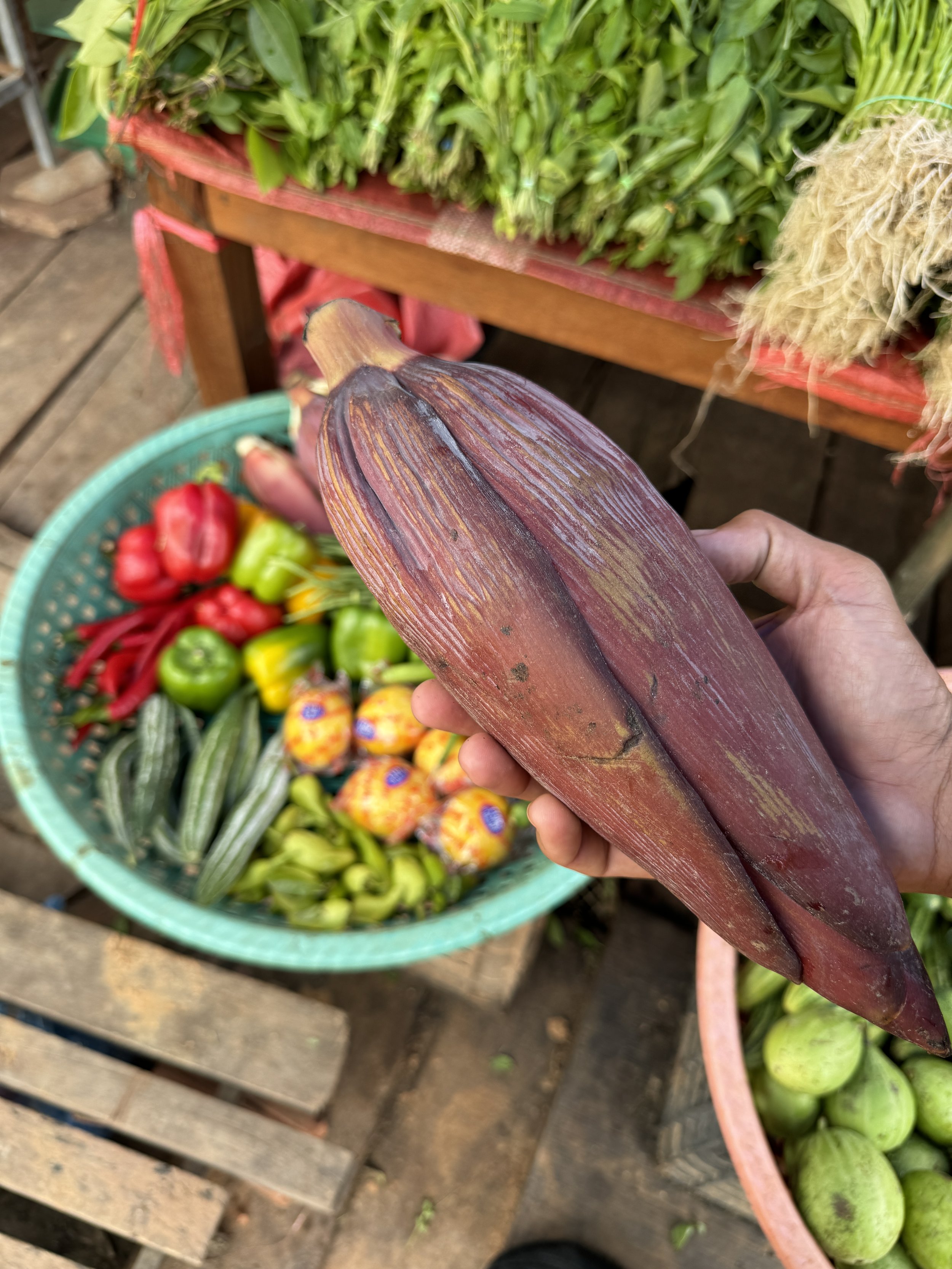July 8
Siem Reap
Siem Reap is the town closest to the Angkor Wat temple and Angkor Wat temple complexes. (BTW, the entire 400 square kilometer area that contains Angkor Wat and the other temples is a UNESCO World Heritage Site and a Cambodian National Park called Angkor Archeological Park).
There have been inhabitants in this area for almost 2,000 years, and the town that used to be here in the era when the temples were being built was the capital of the Khmer Empire and at the time was called simply Angkor. After the area fell in battle to the Siamese Empire, the capital was moved to Phnom Penh. In the 1500’s, the Khmer Empire defeated the Siamese at a battle near Angkor, and the King at that time, King Ang Chan, renamed the city Siem Reap which translates to “Defeat of Siam.”
Fountain of Dragons, Siem Reap
Got all of that? There will be quiz later.
Today, Siem Reap is a town of about 250,000 citizens chiefly that acts as the tourist hub for visiting Angkor Wat and the Angkor Archaeological Park. It has dozens, if not hundreds, of hotels, and at least that many restaurants and bars. It still adheres to the traditional rule that no building can be taller than Angkor Wat (65 meters).
While Siem Reap has visitors of all ages, overall visitors seem to be younger and either backpacking through SE Asia or on longer trips. The central core of the town, which includes the infamous Pub Street, really caters to partiers revelers willing to stay up all night.
View over Siem Reap
Unfortunately for a town that relies so much on tourism,, tourism has not returned to pre-covid levels. One of the guides I talked to said that before Covid, during the peak-season they would have a tour every day with 12-15 participants, and during the off-season they would have tours about half the days with 8-10 participants.
Today, in the peak-season it’s slower than the off season used to be and the off-season is almost completely dry. I was his only participant for our tour and the tour was his first booking in over two weeks. At my hotel, the manager told me I was the only guest for one of my nights and in the upcoming two weeks their busiest would be four rooms rented out of twenty.
The infamous Pub Street
I was able to get out of the city and into the countryside too. The farming techniques are pretty basic, and some farms still use water buffalo for tilling and work around the rice paddies. Most of the households are multigenerational and the farm is used primarily to grow food for the family while others in the household go into town to work.
I visited a Lotus Flower Farm at the very end of the growing season so there were very few blooms left. At local market I saw the local farmers bring their harvests in to sell, including herbs and fruits, but also more exotic items like crickets and frogs.
I saw a duck farm that has about 300 ducks and sells eggs at the same local market that I visited. The meandering around the countryside was a great way to connect and see the non-tourism side of Siem Reap.
A Lotus Flower Farm
People in Siem Reap are struggling with the decline and very slow rebound of tourism since COVID. The town heavily relies on tourism to drive its economy and the slowdown has long-reaching effects. One of the guides told me that he used to make enough money to send assistance back to his home province and his extended family there, but now he’s barely able to sustain himself.
Even some of the decisions the government has made to try to help seem to be hurting, such as the new airport. The old airport was close in to town and TukTuk drivers would get passengers to and from the airport. The new airport is about an hour away from town, so TukTuk drivers get way fewer requests for rides, and only if you are rich enough to own a car or run a shuttle bus service did you see more business.
The New Siem Reap International Airport
